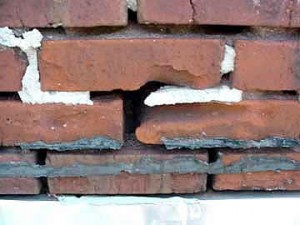Types of Masonry Restoration

If your masonry and/or firebox needs some repairs, call us and our experts will have it fixed in no time!
Masonry restoration is the phrase used for working with any form of masonry on an existing building or home that doesn’t encompass actually building it. Restoration runs the gamut from tearing the masonry down and rebuilding it from scratch to cleaning and sealing. One of the most commonly needed restoration projects is masonry and firebox repair. Keep reading to learn what this job involves and why it’s so critical.
Masonry and Firebox Repair
The specific type of mortar used in fireboxes is called refractory mortar. However, don’t assume that your fireplace was built with this mortar. The chances of an older home actually having refractory mortar in the firebox are slimmer than the chances of a newer home. This is due in large part to changing building codes and the availability of the product. Many brick masons who constructed fireboxes in homes well into the 1990s used either a Portland-cement-based mortar or a self-concocted fireclay mortar (a mix of Portland cement, crushed fireclay, and sand).
Although both of these mortars were approved by building codes of the time, they haven’t fared well in homes in which the fireplaces are used regularly; the problem is simple: Portland cement doesn’t hold up well when subjected to the cycle of heating and cooling that occurs in a firebox. In an effort to combat this problem, most major building codes have added clauses requiring refractory mortar be used, as it doesn’t use Portland cement as a binder; instead, either calcium aluminate or sodium silicate is the binder. Over the long haul, refractory mortar performs far better than Portland-cement mortar and is more readily available than it was a few decades ago.
Approaches for Repairing a Damaged Firebox Mortar
In order to repair damaged firebox mortar, you can take one of three approaches. The first approach involves simply scraping out and repointing the joints between the bricks with refractory mortar. The second approach involves applying a thin coat of refractory cement over the floor of the firebox. The final approach involves removing damaged bricks and replacing them with castable refractory cement. No matter which approach is taken, scrubbing the surface clean and vacuuming any dust before making the repair is critical.
Along with any part of your home, your fireplace requires maintenance to ensure your family’s safety during its use. A damaged firebox can be a potential fire hazard and should be repaired or replaced before using the fireplace again. At Chief Chimney Services, we work hard and pride ourselves on doing outstanding chimney and firebox repair and restoration work. The level of expertise of our CSIA-certified chimney sweeps is unmatched by anyone else on Long Island. No matter what your question or problem, we’re here to help! Contact us to schedule an appointment today.
